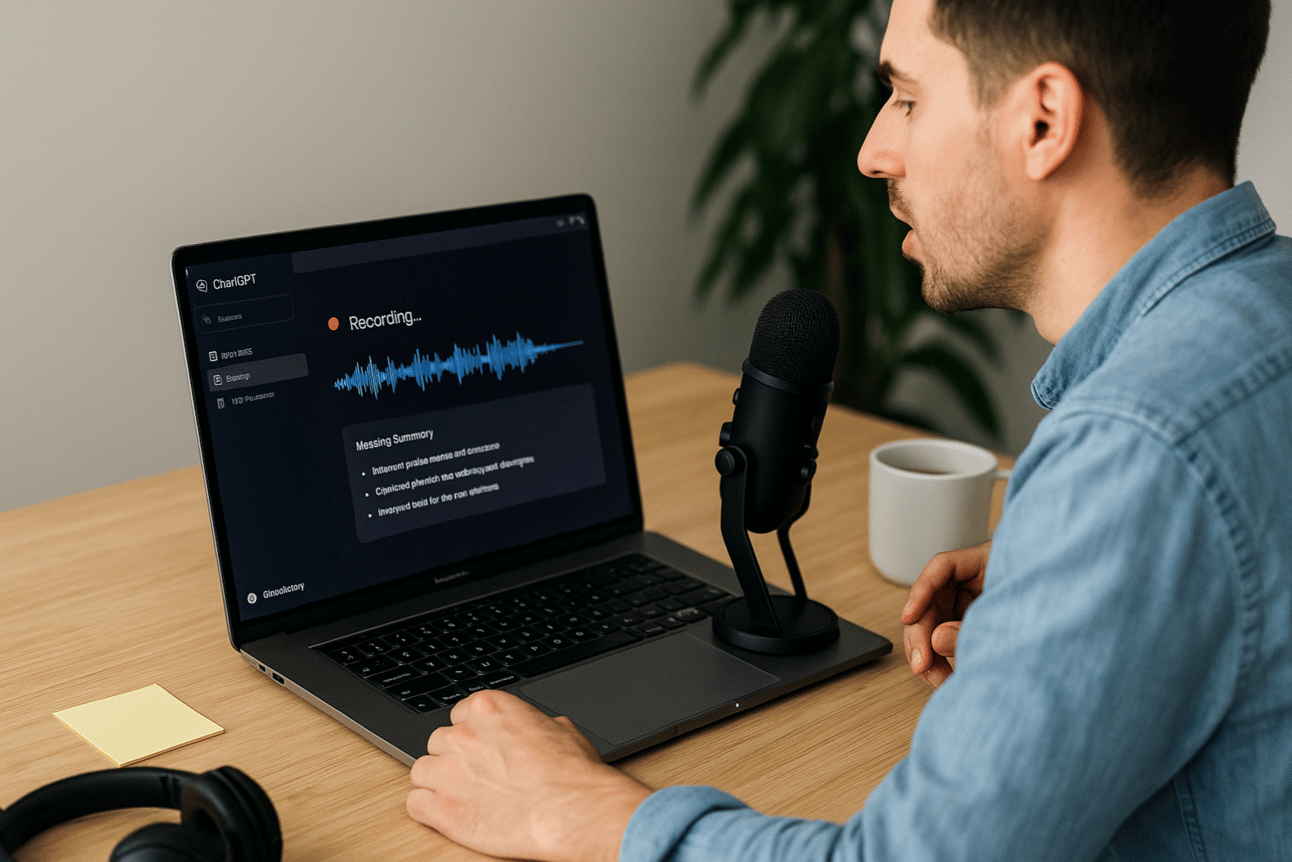
Image Source: ChatGPT-4o
ChatGPT Record Mode Now Captures and Summarizes Voice Notes
ChatGPT has introduced a new “record mode” that allows users to transcribe and summarize audio recordings directly within the macOS desktop app. Designed for users in Enterprise, Edu, Team, and Pro workspaces, this tool can capture meetings, brainstorms, or voice notes and turn them into editable summaries.
These summaries, called canvases, are saved in your chat history and can be transformed into formats like project plans, emails, or even code. ChatGPT can also reference previous recordings and their transcripts to provide more helpful answers across different conversations.
How It Works
To use record mode:
Start Recording: Click the Record button at the bottom of any chat window. You may be prompted to grant microphone or system-audio permissions.
Speak Naturally: ChatGPT transcribes live as you talk. A timer displays elapsed time, and you can pause or resume recording at any point.
Finish and Generate Notes: When you click Send, the transcript is uploaded and a private canvas opens with a structured summary.
Edit or Repurpose: You can manually adjust the summary or ask ChatGPT to turn it into a formatted output, such as an email or code scaffold.
Note: Please make sure you check local laws and always get the right consents before recording others. You're responsible for making sure that your use of record mode follows applicable laws, which may vary depending on where you and the people you're recording are located.
Access and Availability
Record mode is currently being rolled out gradually to the following account types, and is only available through the macOS desktop app:
Enterprise workspaces
Edu workspaces
Team plans
Pro users
If you don’t see the feature right away, it may not yet be enabled for your account. However, there’s currently no timeline for when record mode will be supported on Windows or mobile devices.
Key Features and Limits
Price: Included at no extra cost.
Duration: Each session can run up to 120 minutes. Longer sessions will stop automatically and generate notes.
Multiple Speakers: Supported.
Languages: English works best; accuracy in other languages varies. A full list of supported languages is available in OpenAI's documentation.
Privacy and Retention
Audio Files: Deleted immediately after transcription.
Transcripts and Canvases: Stored according to your workspace’s retention settings. If a conversation is deleted, its associated files are removed within 30 days unless legally required to retain them.
Enterprise Compliance: Canvases and transcripts are accessible via the Compliance API for Enterprise and Edu workspaces.
Data Usage and Model Training
Audio from record mode is not used to train models.
If you're a Pro, Plus, or Free user with "Improve the model for everyone" enabled, your transcripts and canvases may be used for training.
Team, Enterprise, and Edu workspaces are excluded from training by default.
Transcripts created from record mode follow the same retention policies as other content in your workspace.
Admin Controls
Workspace owners can manage access to record mode:
Enable or Disable: Go to Settings → Workspace Controls.
Default Setting: Record mode is off by default for Enterprise and Edu plans and must be manually turned on.
Reference Record History
A feature called “Reference record history” allows ChatGPT to pull in details from past recordings to answer follow-up questions more effectively—for example, recalling decisions made during a specific meeting.
You can toggle this feature on or off under Settings → Personalization.
What This Means
ChatGPT’s record mode introduces a built-in way to turn spoken conversations into structured, actionable content—without relying on third-party tools or switching between platforms. While other platforms like Zoom and Otter.ai have offered similar transcription features, ChatGPT integrates this capability directly into the chat experience, allowing summaries to flow seamlessly into follow-up prompts, planning tasks, or even code generation.
But with this convenience comes responsibility. Because audio can contain sensitive or personal information, users are expected to secure proper consent and follow all applicable laws when recording. Teams also need to be aware of their workspace's data retention settings and compliance policies—especially when transcripts can be referenced across future conversations.
As voice becomes part of the interface, how we capture, store, and respect spoken information will increasingly shape the trust we place in our tools—and in each other.
Editor’s Note: This article was created by Alicia Shapiro, CMO of AiNews.com, with writing, image, and idea-generation support from ChatGPT, an AI assistant. However, the final perspective and editorial choices are solely Alicia Shapiro’s. Special thanks to ChatGPT for assistance with research and editorial support in crafting this article.
